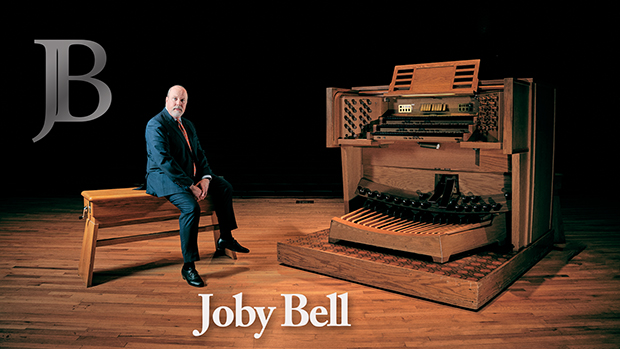Note by note: Vierne Symphony No. 1: Final
 Saturday, August 2, 2025 at 1:00PM
Saturday, August 2, 2025 at 1:00PM
Vierne was later apologetic for this movement. He felt it was too youthful, too swaggering, and too shallow to be good music. If my memory serves, he also felt it was unnecessarily hard compared with the musical return on it. I agree with all this, but if we play the piece with dignity rather than pageantry, it will say what it needs to say, without offending. It is exciting enough on its own without me getting in its way. And guess what – we can hit more of the right notes when we slow down. Just imagine.
For this entire movement, the eighth-note pairs of the main theme will give you no end of grief for evenness. Those two notes often come out as lopsided triplets or as subsets of sixteenth quintuplets. Keep them even and perfectly aligned with the accompanimental figures against them.
Repeat after me: “Slurs in French Symphonic music do not break at the end.” The only authority to break a note in this style is a rest, a breath mark, or some sort of articulation such as a staccato mark. All those little paired slurs at the beginning are nothing more than strong-weak indications. Now, for the right hand, the first notes of these pairs are automatically louder, anyway, because they are higher. So don’t work too hard with those. But the left-hand pairs are the reverse, and you and your ears are going to have to show up for work to keep those sounding correct.
Measures 1 and 2: In many performances, these two measures tend to come off as regal, with poise and grandeur. And then the Pedal enters, and the discussion above regarding uneven eighth-note pairs comes into play. Listen mercilessly to the main theme throughout the movement – the recurrences of that rhythm are relentless, and the siren’s song toward rhythmic sloppiness is nearly overwhelming. Your ears need to be as tired as your fingers and feet when you play this piece.
Measures 4, 8, 13, 17, etc.: Everyone shortens the first note in the Pedal, but Vierne doesn’t ask for that. Nevertheless, I think that approach is here to stay. The accents he places on the half-notes are compelling for some detached prep just before, but he would have placed a staccato on the preceding note each time if he wanted the break.
Measure 5 is usually where people realize they started a little slower than they intended, and so they catch up in this measure. Don’t.
Measures 6, 10, and 11 tend to rush. Don’t let them.
Measures 13, 14, 17, 18, etc.: Again, the eighth notes in the melody tend to rush. Keep hands and feet rigorously aligned in solid rhythm.
Measures 23-27: I tend to start this section on the Récit and then move to the Positif in the middle of 25 and to the Great in the middle of 27. Harmless. I do the same in the recap, measures 190-194.
Measures 31-37: Again, make sure the left hand and Pedal remain rock-solid in their rhythms and tempo. The Pedal often tends to rush the eighth notes. Dust off your Gleason technique and clean those up.
Measure 40: The manual change there is terribly awkward. It can be easily fixed by making the manual change on the second eighth of that measure. Although slightly different, Vierne does this in measure 44.
Measure 49: Vierne doesn’t ask for a slower tempo, but many people play this slower. After all, it’s hard to play, plus it’s marked cantabile. But if you do choose to do that, then you’ll need a place to recover tempo in time for 85. Many people speed up in 67, 77, or 81. Just do so gradually and with intention, rather than jarringly. Another option is to play the entire movement more grandly, if I haven't said that already, hint, hint.
Measure 65: The left hand should move to the Positif on beat 2. Consult Olivier Latry’s corrections for this and other spots.
Measures 65-76: Those double thirds are going to require your best finger crossing technique. There is precious little time for substitution. Those third are often played with some sort of articulation, although Vierne doesn’t ask for that. But that might be another one of those global habits that’s here to stay.
Measure 66: I move the right hand to the Great for the final three eighths of 66, and then move the left hand on the second beat of 67. Smoother and easier.
Measures 127-130, 135-139, 143-145: Consider using two feet for each pair of Pedal eighth notes. This will keep the tempo under control, but that idea goes out the window beginning in 147.
Measures 215-218: Detail alert: Notice that Vierne doesn’t ask the melodic half notes to break along with the staccato quarters under them. And notice the absence of staccatos on the downbeats of all these measures.
Measures 218-220: There are staccatos on some right-hand notes that are not present in the left. I believe they should be added. But not in the Pedal.
Measures 243-244: As I have said many times before for many other pieces, those Pedal notes are melodic, and this is neither a race nor a parade of technique. Those notes deserve to be heard as the music they are, not as a Pedal exercise. Play music there, and let the notes be exciting on their own terms (which they are). Matter of fact, notice that Vierne does not even ask for a final ritard. If you obey that non-directive, then the final four measures are quite thrilling without help.
 Joby Bell | tagged
Joby Bell | tagged  Note by note
Note by note 